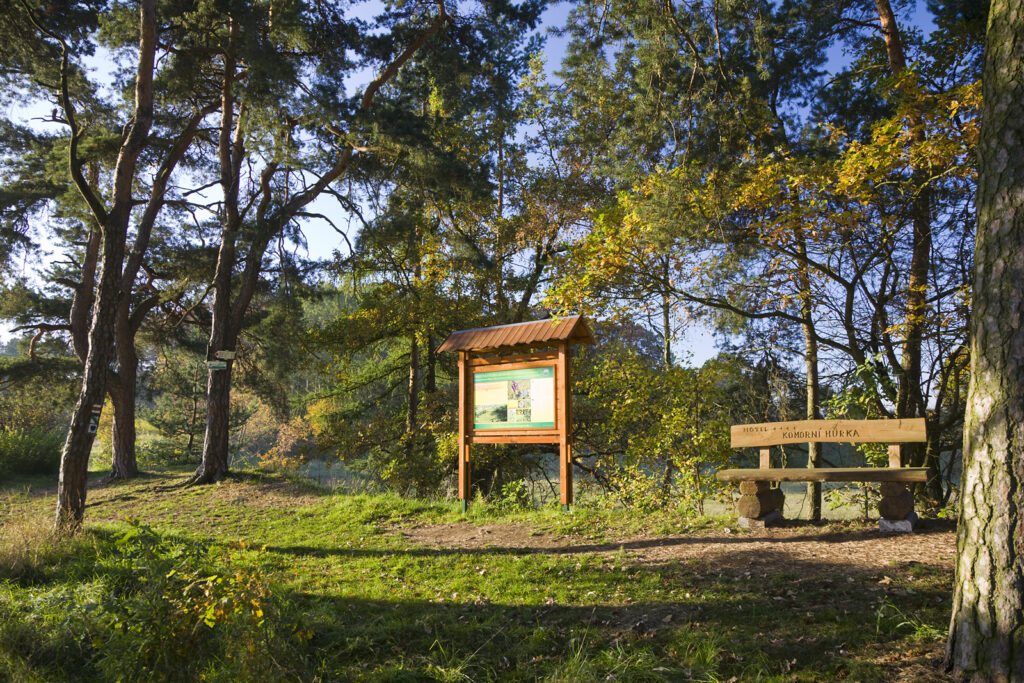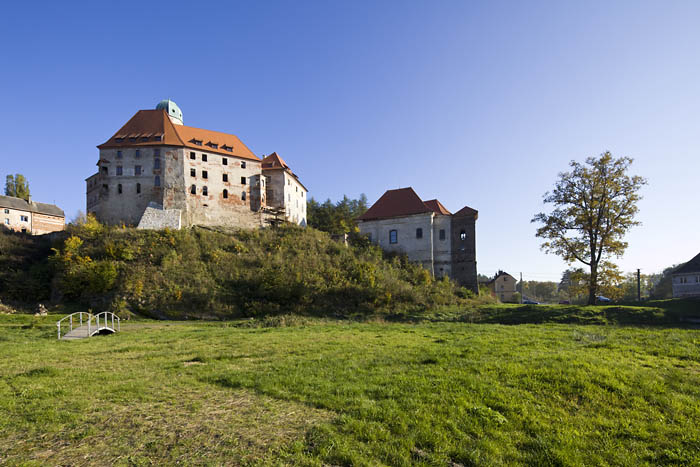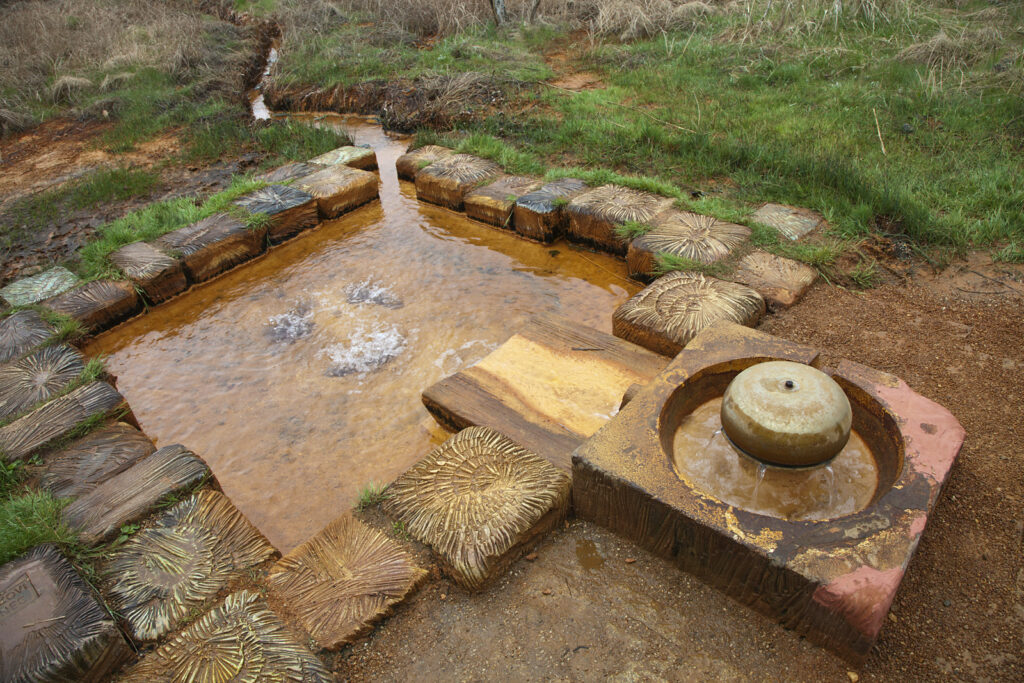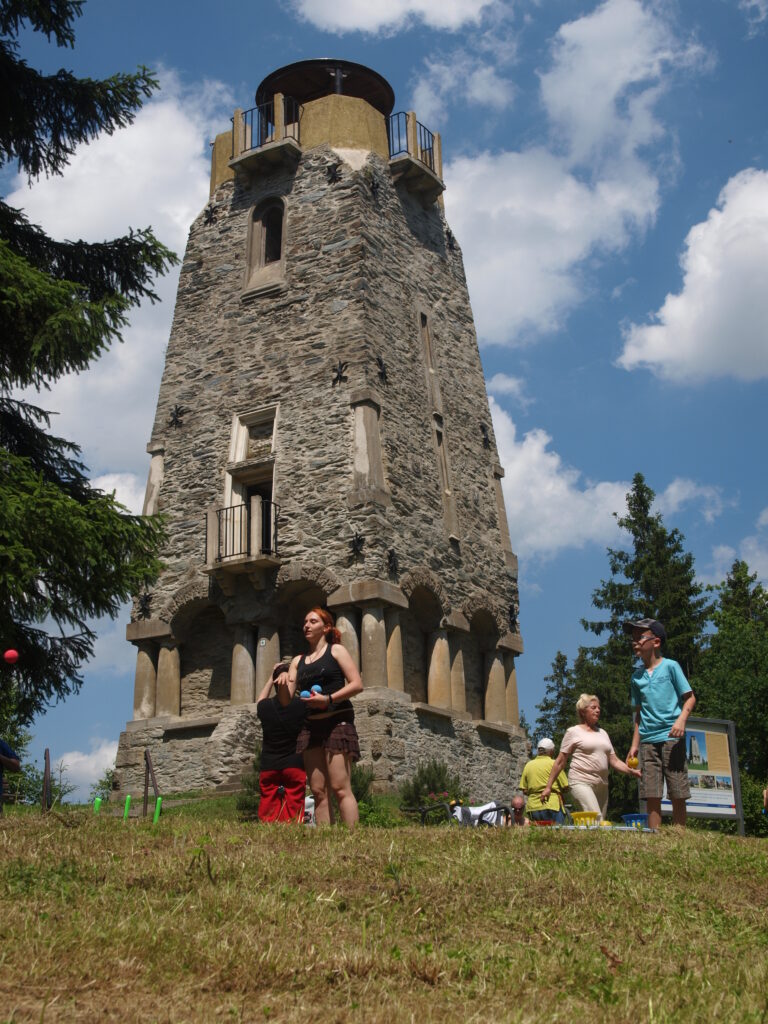We have selected for you
Komorní hůrka is the youngest volcano and the best-preserved example of volcanic activity in the Czech Republic, located at an altitude of 503 metres above sea level. Since 1951, it has been declared a National Nature Reserve.
The Cultural Route of Vogts connects the historical Landvogt of Weida with the historical Cheb Region and the Czech Republic in a completely new way and regardless of the borders, through presenting the hike and historical facts in well-known and lesser-known contexts.
The Pomezná Stronghold is the ruins of a stronghold, originally a castle dating to the 14th century. It is privately owned, and the owner is gradually carrying out repair and restoration work on it.
The castle and chateau at Libá, the first mention of which dates to 1264. 1264. The original castle was reconstructed into a Rococo chateau in the shape of an irregular quadrangle. Since 1991, it is privately owned, but parts of the castle and chateau are accessible to the public.
Waldsassen, a historical German town in the borderlands. Some of its significant monuments include the Abbey Basilica with the largest church and monastery crypt in Germany, the library in the Cistercerian Convent, the Baroque rotunda of the Chapel of the Holy Trinity, and the Stiftlandmuseum - which documents the life of our predecessors.
The first mention in writing about the castle in Starý Hrozňatov dates to 1223. All that remains of the castle is the massive cylindrical tower. The grounds are privately-owned, and so sadly, they are not accessible.
Maria Loreto - In the past, one of the most visited pilgrimage sites in both the Czech Republic and Germany. The pilgrimage site is surrounded by cloisters built in the shape of a quadrangle. The main entrance is decorated by a massive bell tower. The Great Way of the Cross leading from Cheb was built simultaneously with this building.
The Soos Nature Reserve was established in 1964. 1964. It spreads out over an area of 221 ha. You can walk through part of this area on the 1.4-km-long educational trail with information boards and commentary. You will see the peat bog and the marshland where an enormous number of mineral springs source alongside carbon dioxide effusing from so-called mofettas - mud volcanoes.
Nový Drahov - a Rural Heritage Reserve with the typical Cheb architecture timbered homesteads. You can visit the potter workshop of Mr Werner at one of these homesteads.
Seeberg Castle was founded around 1200. It is not mentioned until 1322, when King John of Bohemia gained the Cheb Region. In 1703, the castle was handed over to the town of Cheb. Currently, an exhibition on the history of furniture and interiors, as well as on rural life in the 19 th-century Cheb Region, is installed at the castle.
The Doubrava Open-Air Museum is a Village Monument Reserve thanks to its half-timbered farmhouses built in the famous Cheb architectural style. The most famous is the Rustler Farmstead - a timbered farmstead dating to 1751 and housing a museum.
The charming and stylish small chateau and café known as Amerika has been standing on the edge of the forest park near the fishpond of the same name since 1898.
Along with Karlovy Vary and Mariánské Lázně, Františkovy Lázně is part of the world-renowned “West Bohemian Spa Triangle”. Here, one finds an exceptional amount of natural therapeutic resources - 21 mineral springs, a source of dry gas, and the unique sulphuric-ferrous peat of Františkovy Lázně.
The Bismarck Lookout Tower located on Zelená Hill is an 18-metre-high stone tower with 71 stairs that dates to 1909. After World War II, it was located in the territory of the prohibited border zone and was made publicly accessible only after the town of Cheb had it completely reconstructed in 2005.
This fun educational trail with 13 information boards will inform you about the defunct swimming hole, about volcanism, about the flooded paper factory, but also much more about the flora and fauna of this location.











